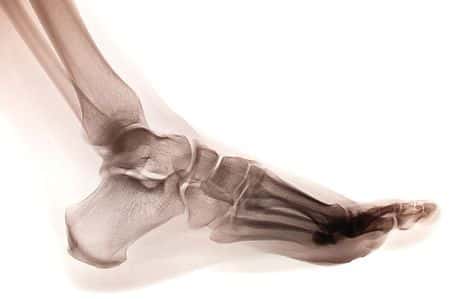Podiatrist fails to diagnose fatal post-operative pulmonary embolism
Updated on
This case involves a fifty-two-year-old male patient with a past medical history of obesity, hypertension and hyperlipidemia. The patient slipped on ice and fell on his way to work. The fall resulted in a fracture of the patient’s right ankle. He was treated in the emergency room and referred to a podiatrist DPM physician surgeon for surgical repair of the fracture. The surgery went well with no complications intraoperatively. The patient was discharged to rehab. Approximately six weeks after the operation, the patient presented to the treating podiatrist DPM physician’s office for a follow up visit. During the consultation the patient complained of a three day history of shortness of breath. The treating physician performed three checks of the patient’s heart rate. On each occasion the patient was found to be very tachycardic. Further examination by the physician revealed swelling of the patient’s right leg. This was documented in the patient’s medical notes as well. The treating podiatrist DPM physician advised the patient to see his family doctor about the tachycardia, shortness of breath and lower extremity swelling. The physician did not convey any sense of urgency to the patient nor did he explain that these symptoms could be indicative of a life threatening condition. Instead, he advised the patient that he needed to consult his family doctor before he could be cleared for anesthesia for a second surgery to remove surgical pins from the treated ankle which was due to take place in the next few weeks. The physician made no emergency referral and took no other actions to address the patient’s symptoms. Two days after the consultation with the treating physician the patient was found dead in his home by a relative. An autopsy revealed the cause of death to be a massive pulmonary embolism.
Question(s) For Expert Witness
1. What is the standard protocol when tachycardia is revealed in a patient with this risk profile?
2. Do you believe this patient should have been urgently referred to the emergency room given his risk for pulmonary embolism?
Expert Witness Response E-000183
 There are three big emergencies when it comes to podiatry. The first is a diabetic with an infection, the second is a patient with compartment syndrome, and the third is the situation described here. When a patient presents to you after having surgery and they are light headed, have shortness of breath, swelling, dizziness, etc. this is an emergency. You do not tell them to see a family physician in their own time and you should not even just tell them to go to the emergency room when they can. The treating physician should call the paramedics and get them to the hospital as soon as possible. This patient may still be alive if this was done.
There are three big emergencies when it comes to podiatry. The first is a diabetic with an infection, the second is a patient with compartment syndrome, and the third is the situation described here. When a patient presents to you after having surgery and they are light headed, have shortness of breath, swelling, dizziness, etc. this is an emergency. You do not tell them to see a family physician in their own time and you should not even just tell them to go to the emergency room when they can. The treating physician should call the paramedics and get them to the hospital as soon as possible. This patient may still be alive if this was done.
About the author
Dr. Faiza Jibril
Dr. Faiza Jibril has extensive clinical experience ranging from primary care in the United Kingdom, to pediatrics and child abuse prevention at Mount Sinai Hospital, to obstetrics in Cape Town, South Africa. Her post-graduate education centered on clinical research and medical ethics. Dr. Jibril is currently Head of Sales in the US and Canada for Chambers and Partners - a world leading legal ranking and insights intelligence company.
Subscribe to our newsletter
Join our newsletter to stay up to date on legal news, insights and product updates from Expert Institute.
Sign up nowFind an expert witness near you
What State is your case in?
Subscribe to our newsletter
Join our newsletter to stay up to date on legal news, insights and product updates from Expert Institute.



